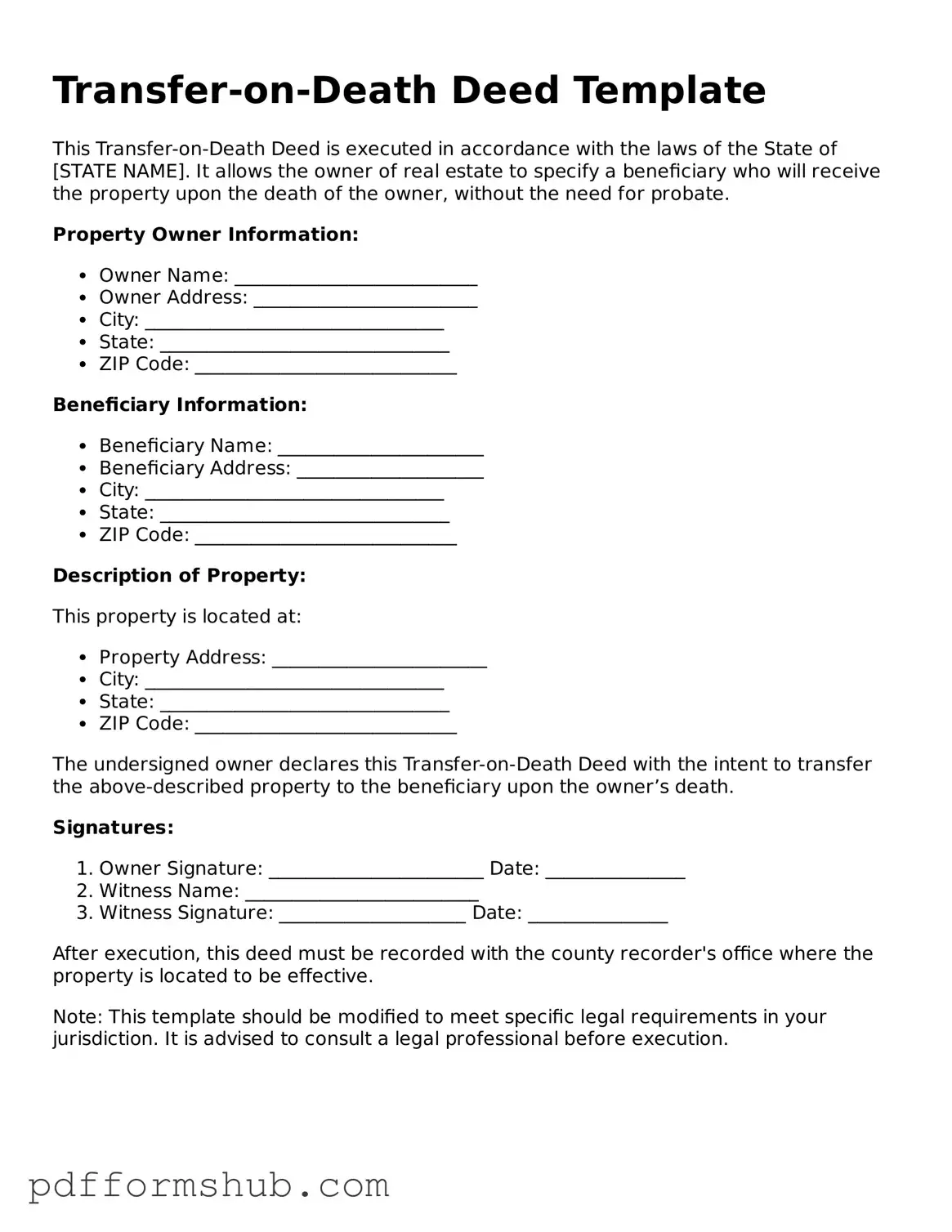Valid Transfer-on-Death Deed Form
A Transfer-on-Death Deed is a legal document that allows property owners to transfer their real estate to designated beneficiaries upon their death, bypassing the probate process. This form provides a straightforward way to ensure that your property goes to the people you choose without the complications often associated with estate administration. If you're ready to secure your property for your loved ones, consider filling out the form by clicking the button below.
Customize Form
